Improving Our Understanding of Seabird Behaviour at Sea
This project collated tracking data from five seabird species thought to be vulnerable to offshore wind farms. These data were analysed to understand whether seabird distribution data, usually undertaken in daytime, good weather conditions, were representative of behaviour in other conditions.
This document is part of a collection
7.4 Appendix AD. Transition effects between states in relation to covariates
Plots are generated for specific covariates at the means of other covariates in the model. The range of wind speeds, as with other covariates, within plots are presented as standardised values. The following corresponding range of real wind speed values is given as follows to aid interpretation:
- Gannet: Alderney, 0.03 – 14.45 (6.26 ± 2.83) m/s; Bass Rock, 0.03 – 18.02 (5.59 ± 2.76) m/s;
- Lesser Black-backed Gulls (offshore): Walney, 0.07 m/s – 13.34 (4.69 ± 2.49) m/s; Skokholm, 0.04 m/s – 16.67 (5.31 ± 2.22) m/s; Orford Ness 0.04 m/s – 12.46 (4.99 ± 2.56) m/s;,
- Kittiwake: Isle of May, 0.18 m/s – 13.19 (4.60 ± 2.14) m/s; Colonsay, 0.07 – 13.94 (5.24 ± 2.55) m/s; Bempton Cliffs, 0.03 – 12.26 (5.15 ± 2.32) m/s; Orkney, 0.05 – 12.63 (5.58 ± 2.50) m/s;
- Razorbill: Colonsay, 0.03 – 14.26 m/s; Puffin Island, 0.05 – 14.81 m/s (4.77 ± 2.77); Isle of May, 0.17 – 10.29 (4.53 ± 2.51) m/s;
- Guillemot: Puffin Island, 0.25 m/s – 9.36 (3.86 ± 2.11) m/s, Isle of May, 0.20 – 11.8 (4.96 ± 2.08) m/s, Colonsay, 0.06 m/s – 11.26 (4.68 ± 2.42) m/s; Fowlseugh 0.60 m/s – 12.91 (5.30 ± 2.29) m/s.
7.4.1 Northern Gannet
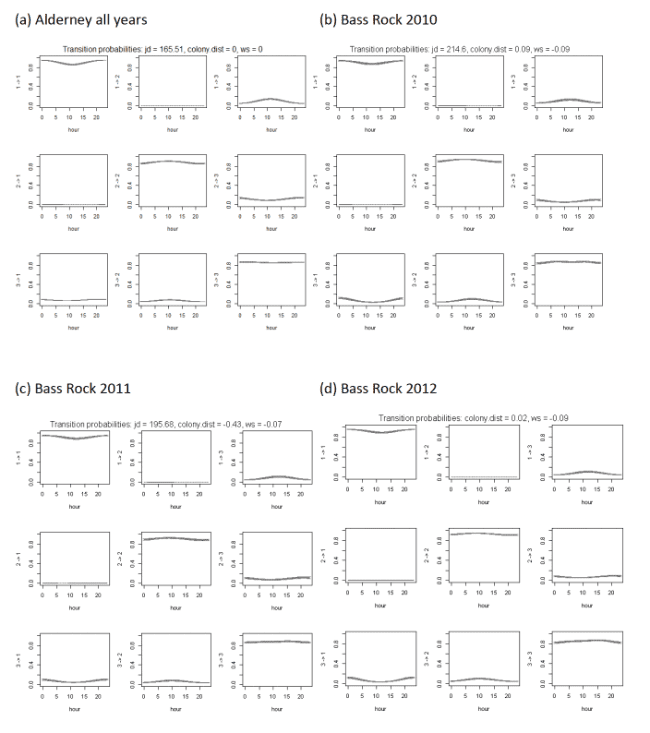
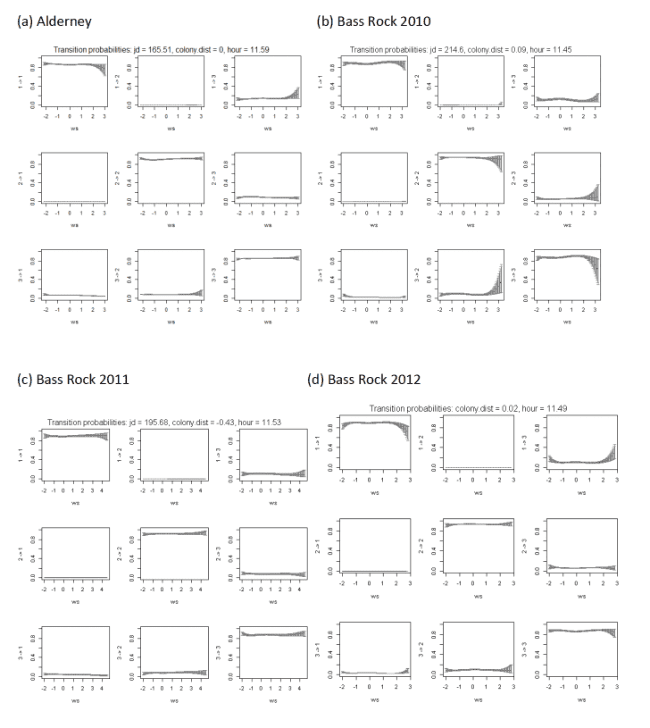
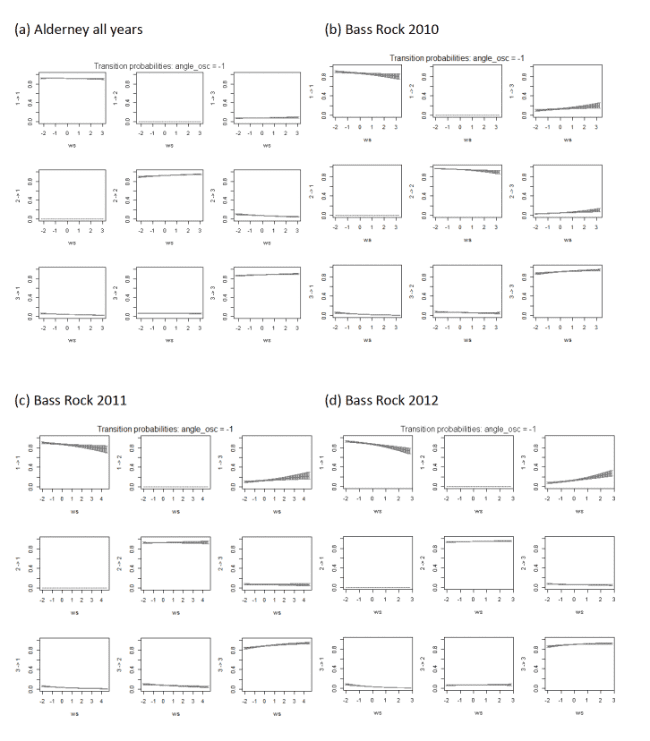
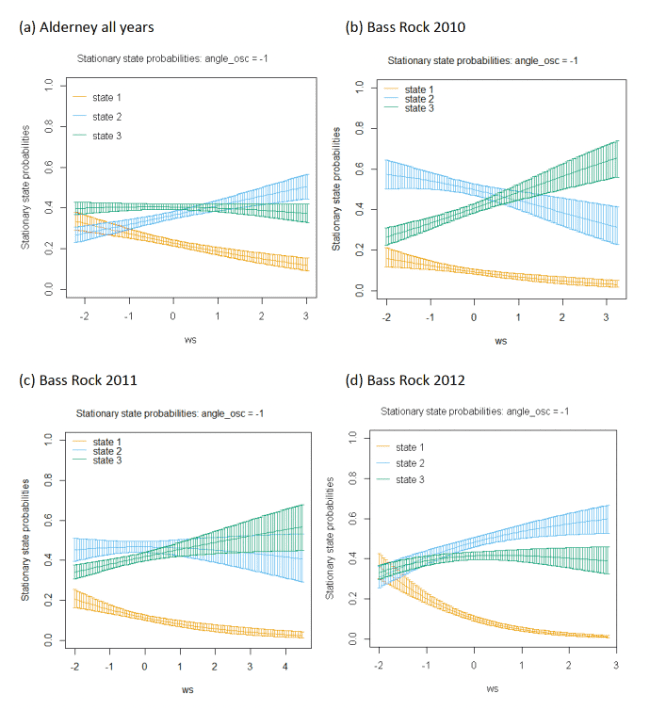
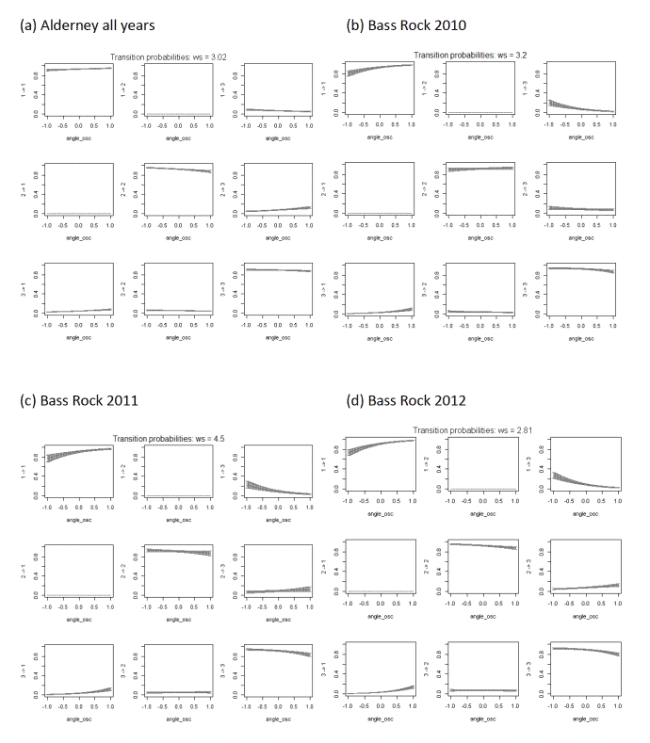
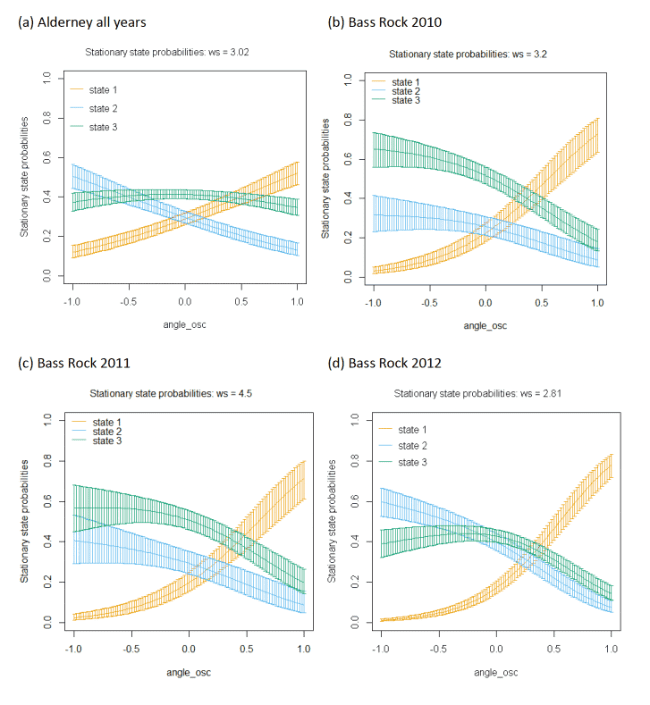
7.4.2 Lesser Black-backed Gull
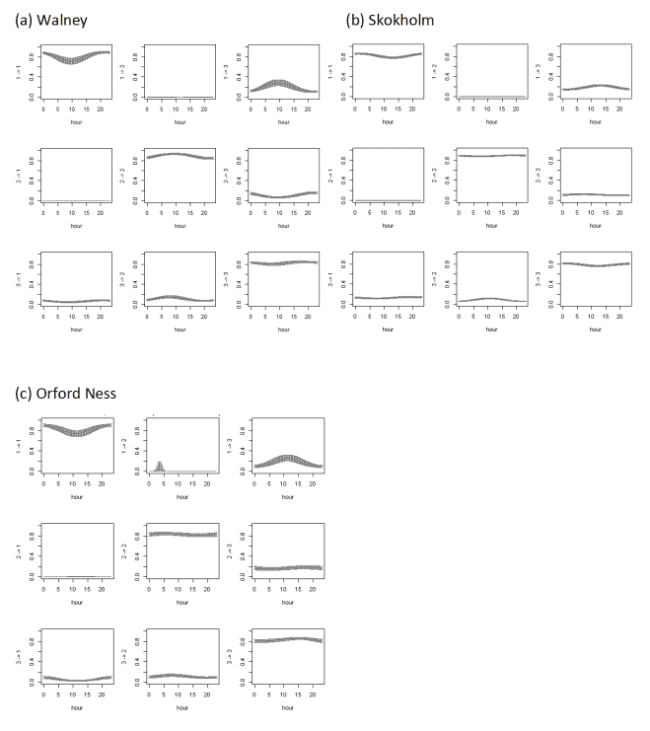
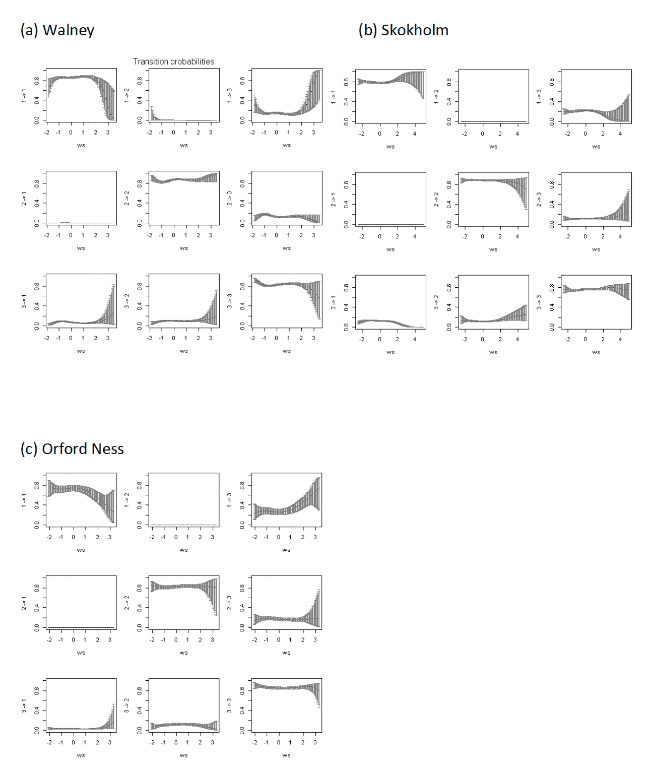
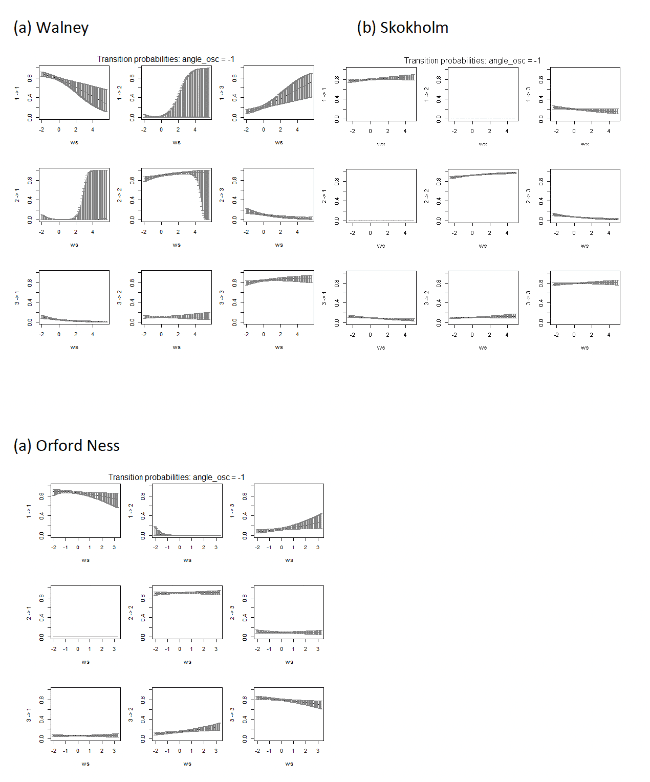
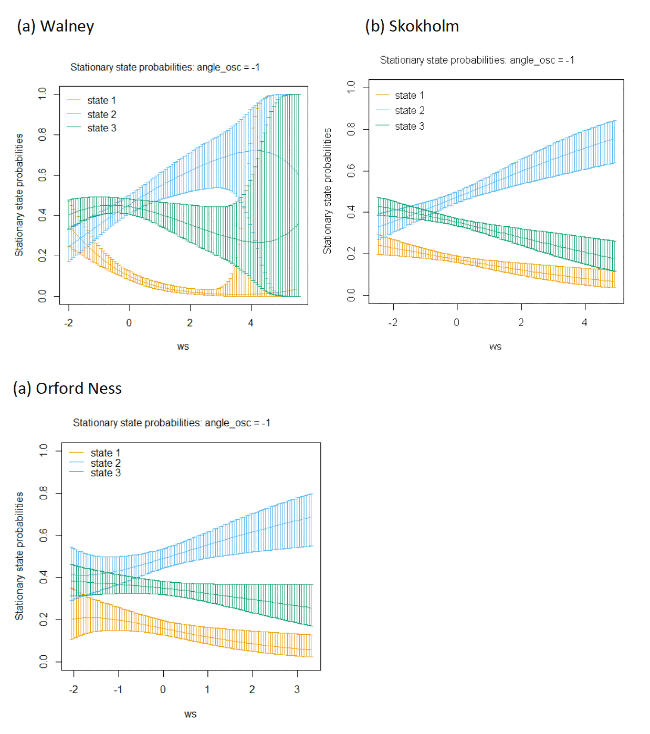
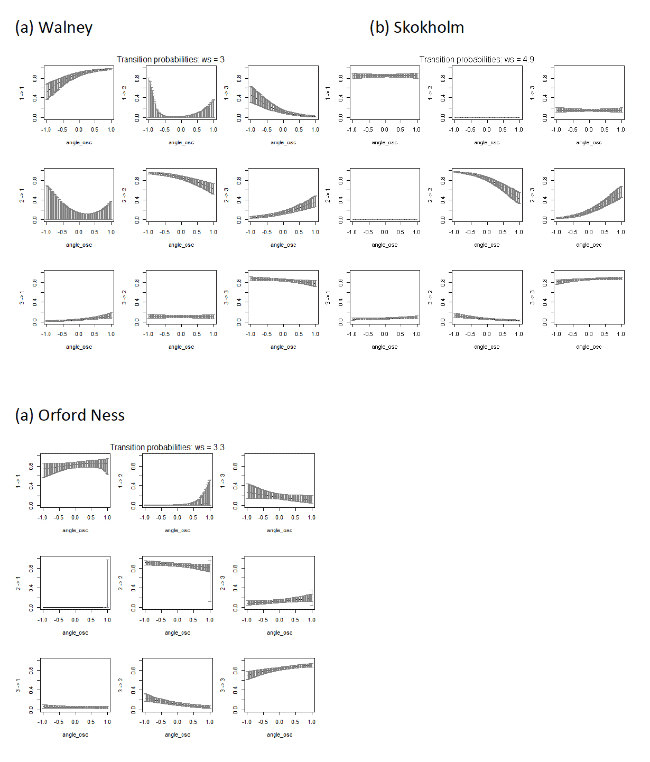
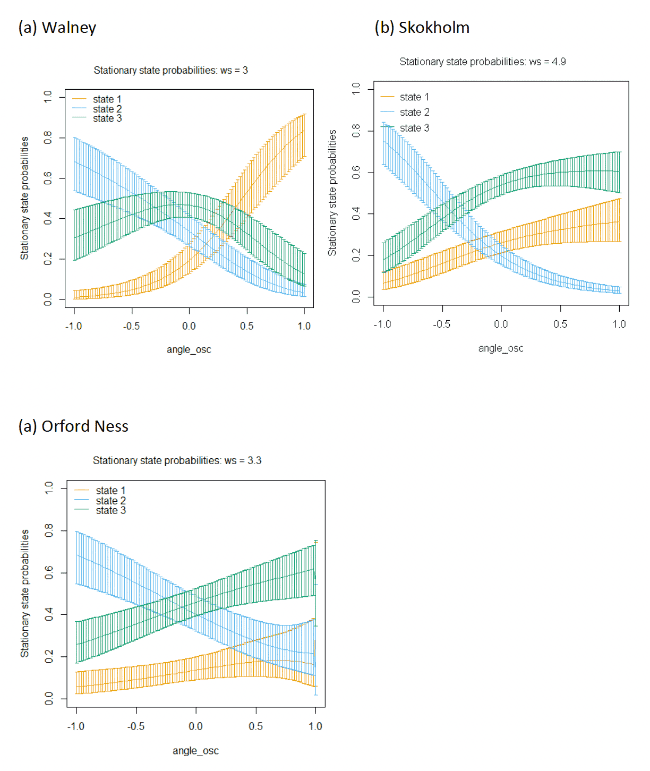
7.4.3 Black-legged Kittiwake
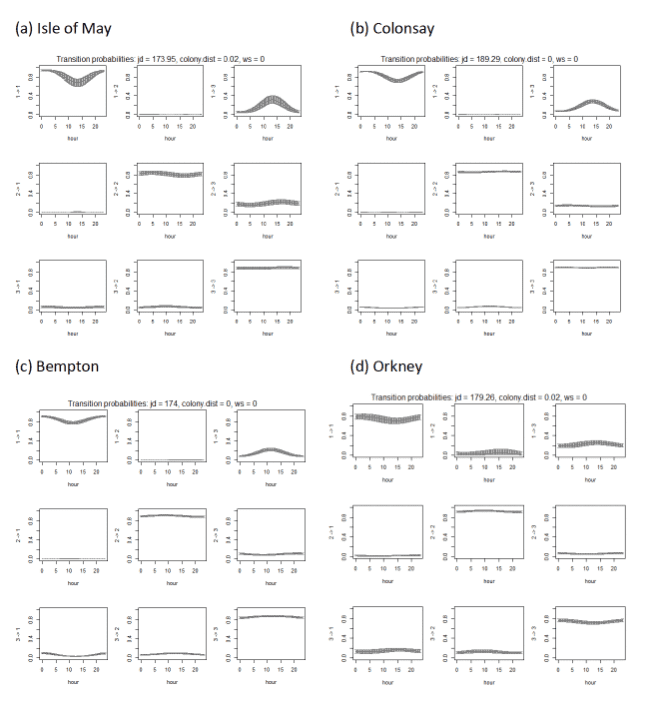
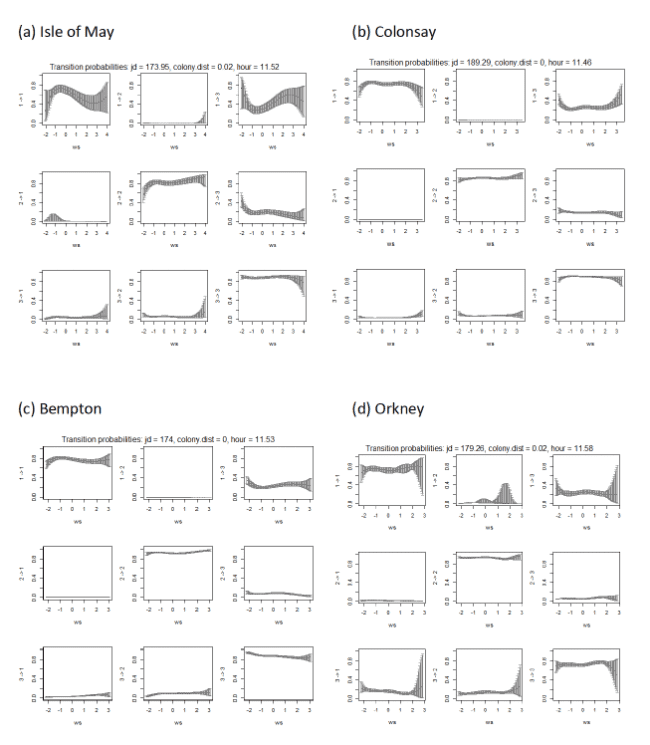
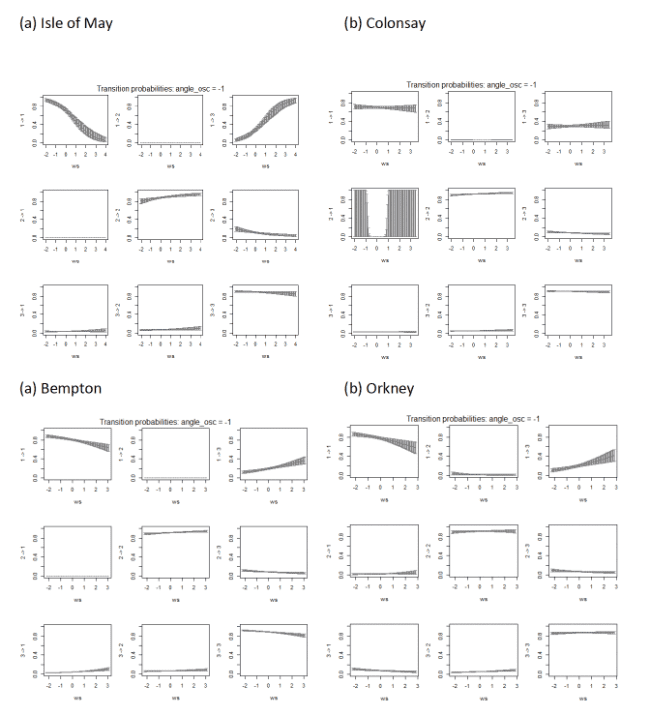
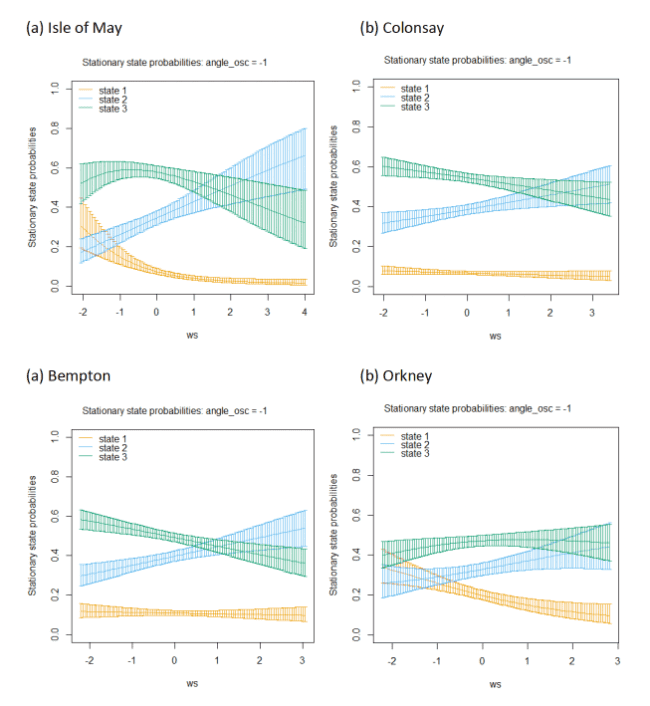
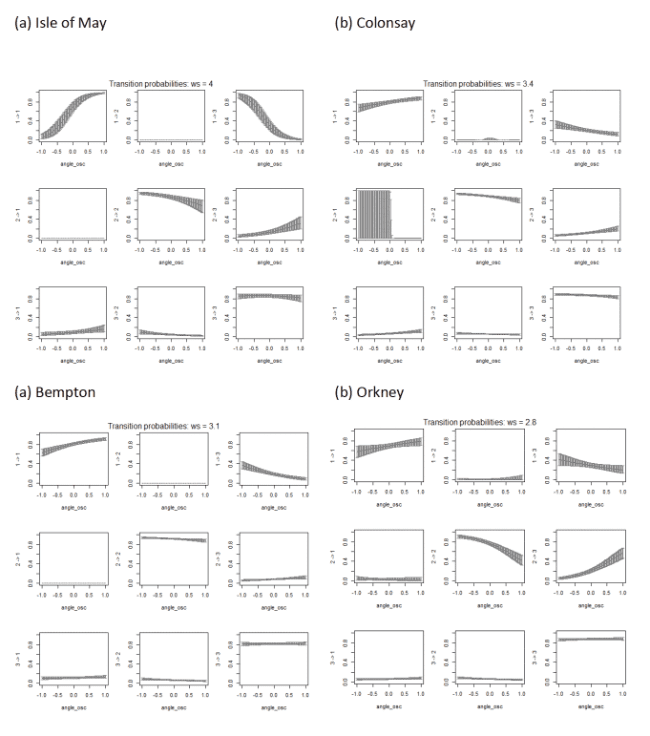
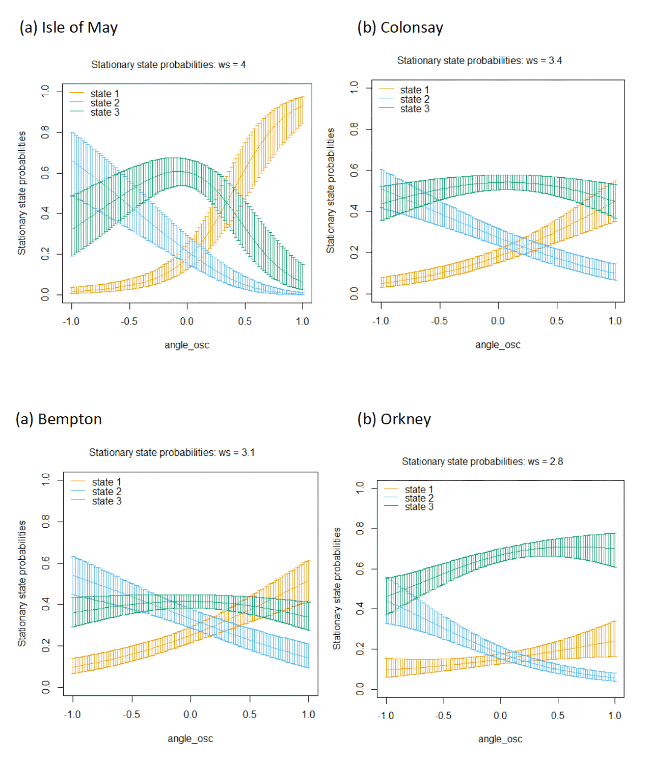
7.4.4 Razorbill
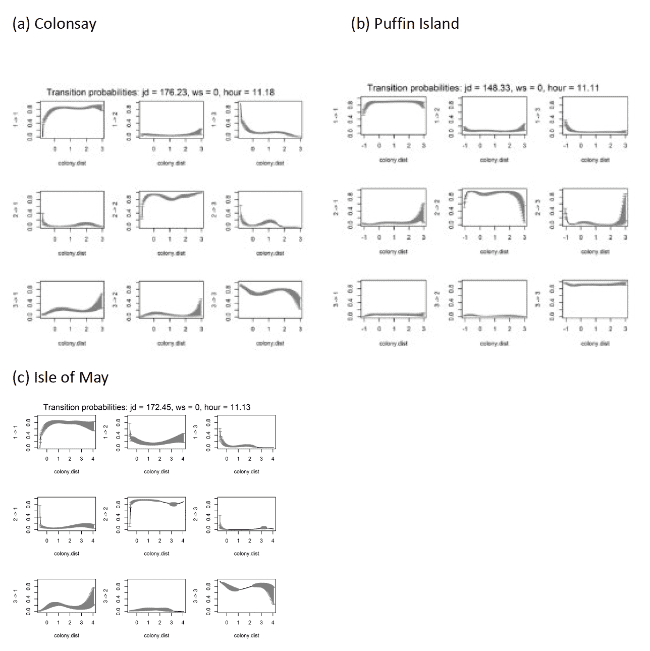
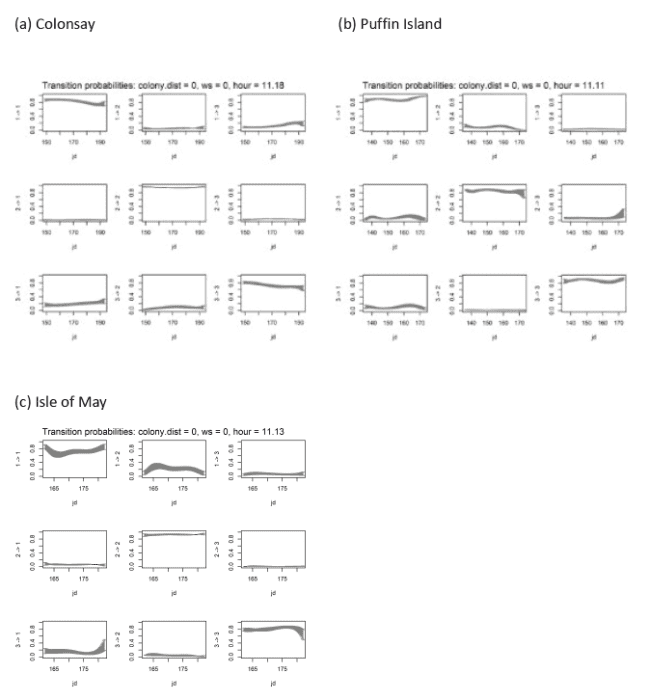
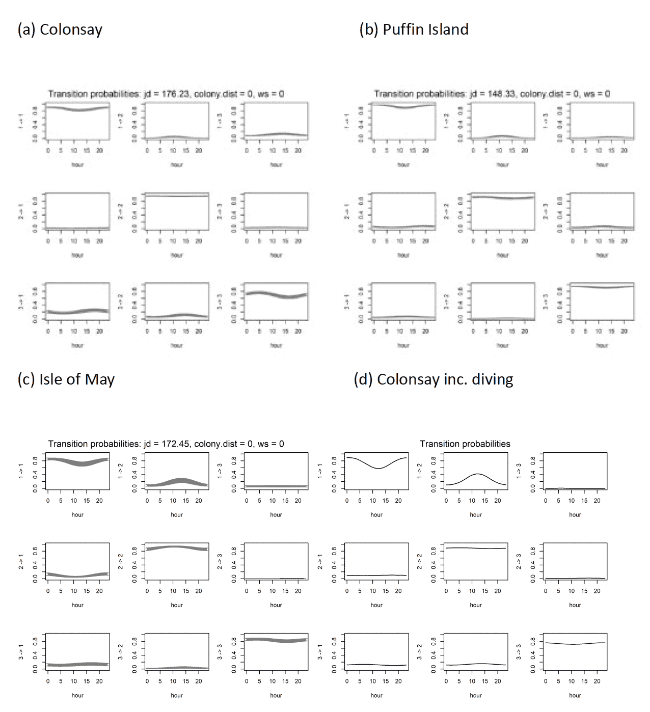
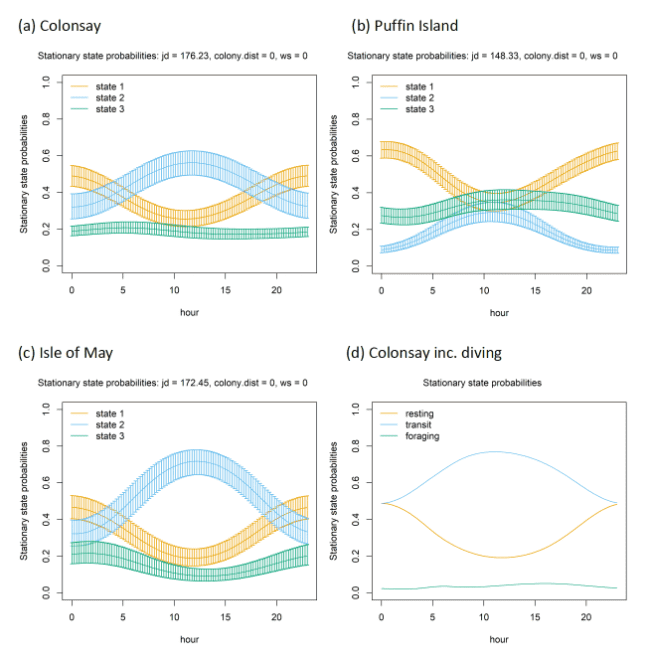
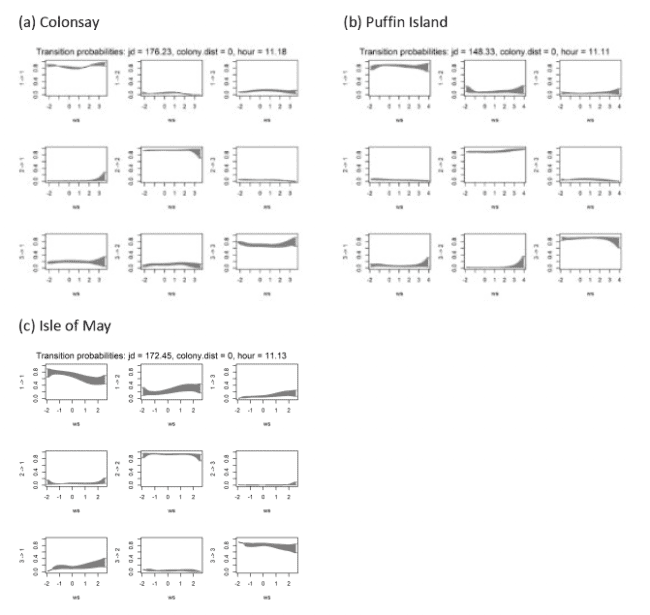
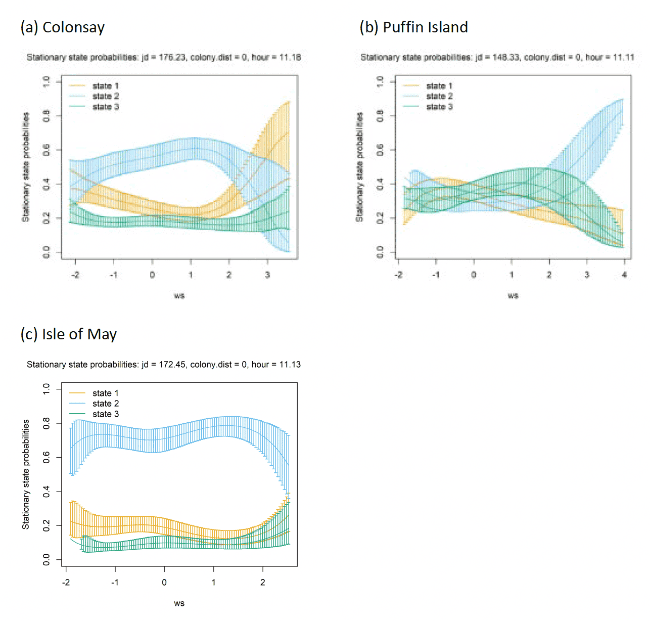
7.4.5 Common Guillemot
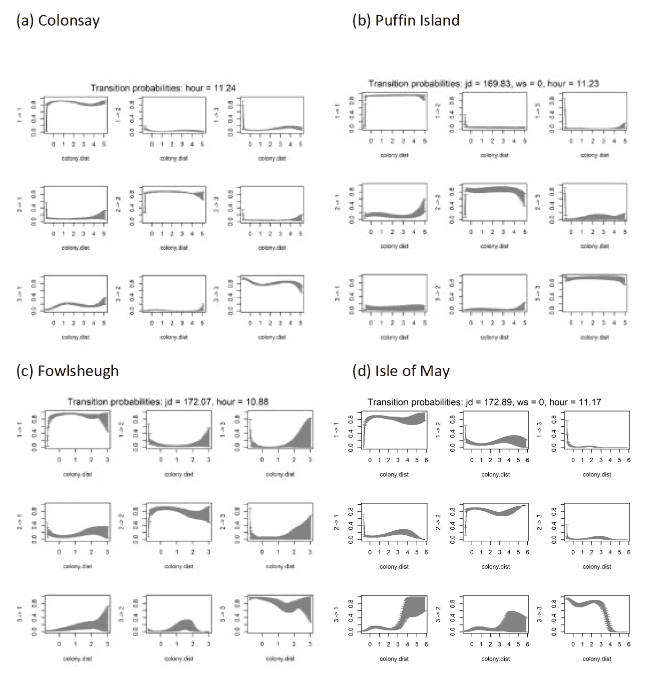
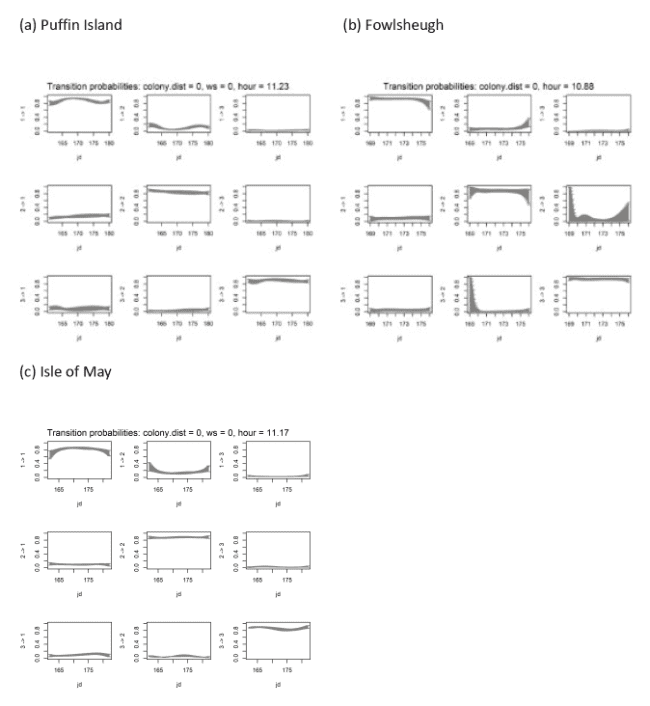
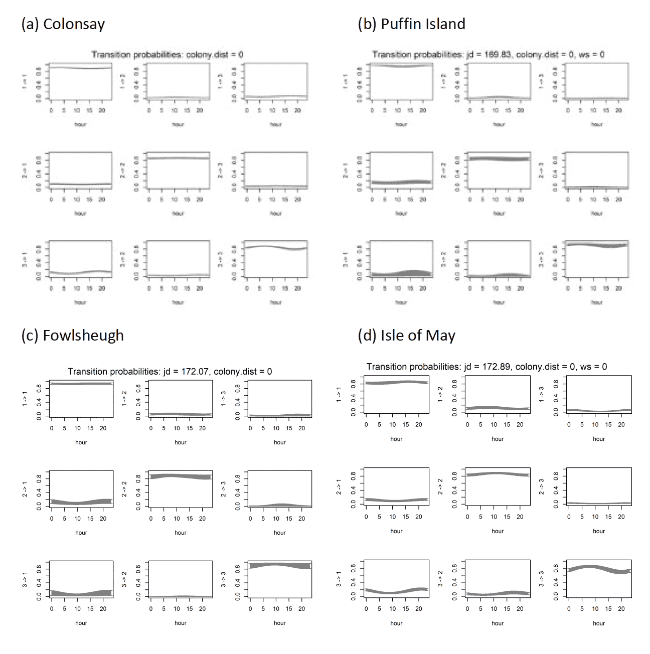
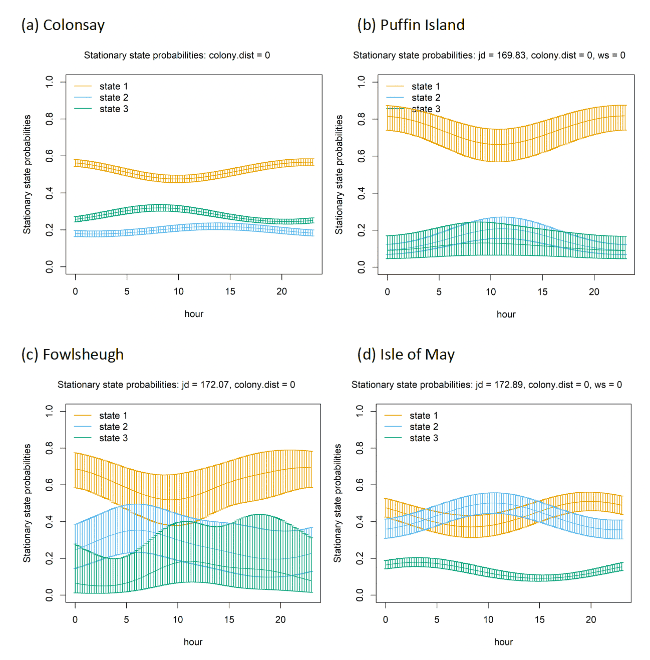
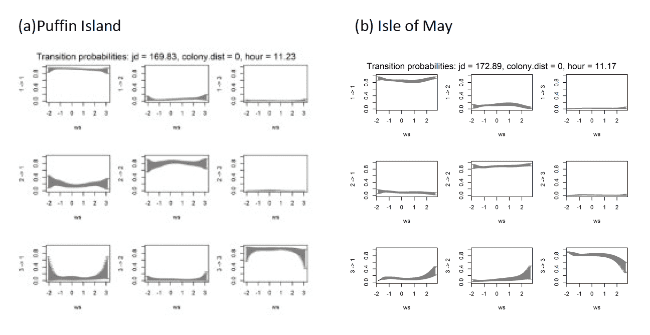
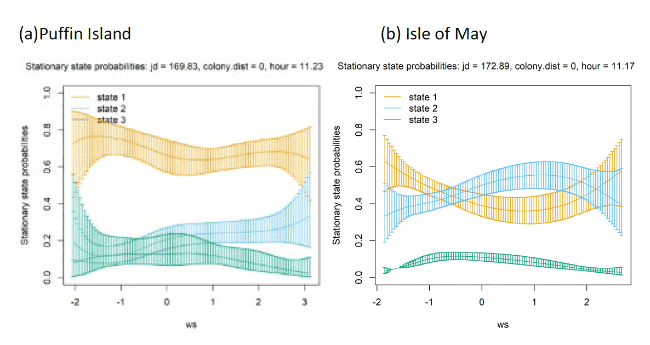
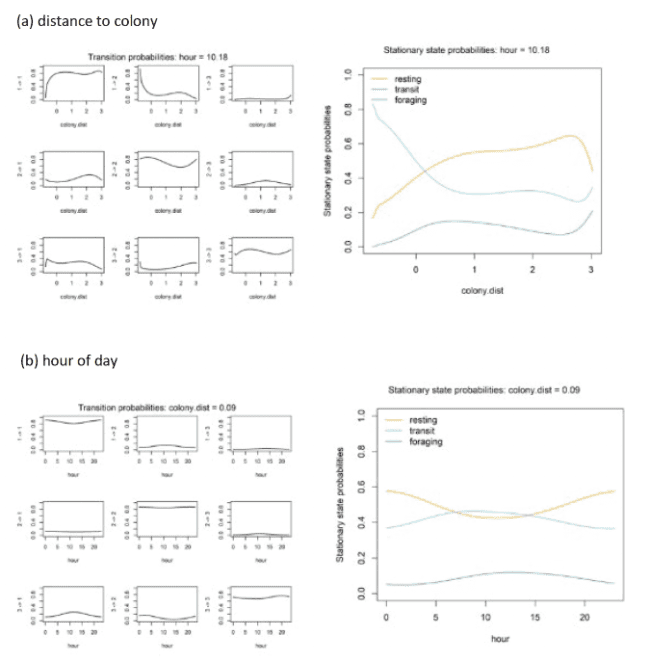
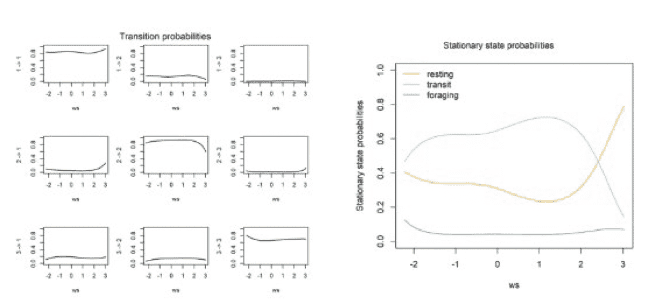
Contact
Email: ScotMER@gov.scot
There is a problem
Thanks for your feedback